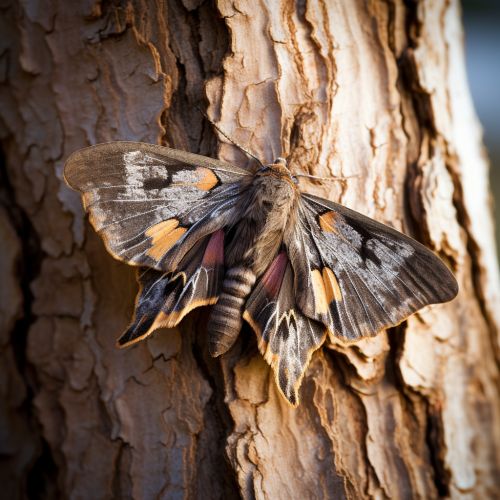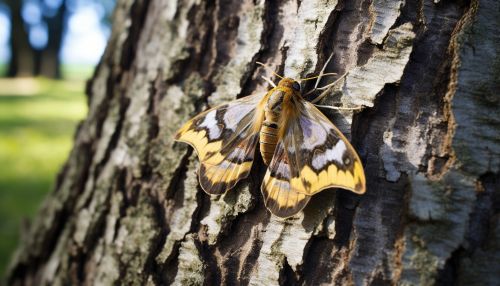The Evolution of Cryptic Coloration in Moths
Introduction
Cryptic coloration, or camouflage, is a survival strategy employed by many species across the animal kingdom, including moths. This article will delve into the evolution of this fascinating trait in moths, examining the selective pressures and genetic mechanisms that have shaped it.
Evolutionary Background
The evolution of cryptic coloration in moths is a classic example of natural selection at work. Moths with coloration that allowed them to blend into their surroundings were less likely to be seen and eaten by predators, thus increasing their chances of survival and reproduction. Over time, these advantageous traits became more prevalent in the population, leading to the diverse array of cryptically colored moth species we see today.
Selective Pressures
Several factors have driven the evolution of cryptic coloration in moths. Predation is the most obvious selective pressure, with moths evolving to match their environment in order to avoid detection. However, other factors such as sexual selection and thermoregulation also play a role. For example, darker moths may be better able to absorb heat, giving them an advantage in colder climates.
Genetic Mechanisms
The genetic mechanisms underlying the evolution of cryptic coloration in moths are complex and multifaceted. Research has identified several genes associated with coloration, including those involved in the production of pigments and the development of wing patterns. Changes in these genes, whether through mutation or recombination, can lead to new color variants that may be favored by natural selection.
Case Study: Peppered Moths
The evolution of the peppered moth in the UK during the Industrial Revolution is one of the most famous examples of cryptic coloration in action. Prior to the Industrial Revolution, the majority of peppered moths were light-colored, allowing them to blend in with the lichen-covered trees in their environment. However, as pollution from factories killed off the lichen and darkened the trees, dark-colored moths became more common. This rapid change in coloration is a striking example of how environmental changes can drive the evolution of cryptic coloration.


Conclusion
The evolution of cryptic coloration in moths is a complex process influenced by a variety of selective pressures and genetic mechanisms. Through the lens of this fascinating trait, we gain insight into the workings of evolution and the intricate interplay between organisms and their environment.
